Using safe, non-toxic cleaning products is one of the best things you can do to improve your health. Certain ingredients in cleaning products can cause many different health problems and in this post I share the ingredients to watch for and avoid, and how to choose safe cleaning products.
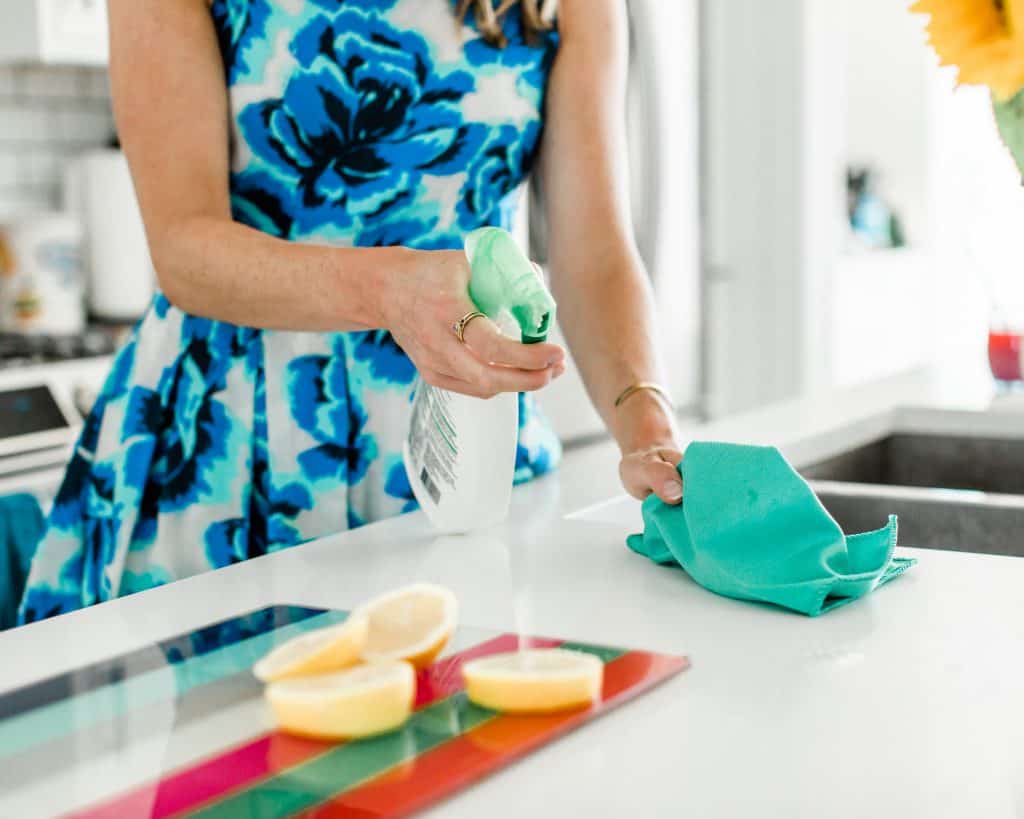
Would you like to save this for later?
Disclaimer: some of the links in this post are affiliate links where I make a small commission if you purchase the product through that link. This does not cost you anything extra and helps me keep this website running.
Table of Contents
- How to choose safe cleaning products:
- Health risks of cleaning products: asthma
- Health risks of cleaning products: endocrine disruption, developmental toxicity and infertility
- Health risks of cleaning products: cancer
- Health risks of cleaning products: burns and poisoning
- Health risks of cleaning products: allergic reactions and skin irritation
- Ingredients to avoid in cleaning products:
- Other ingredients to avoid in cleaning products:
- Our favorite safe cleaning products:
- Other posts you will want to read:
- Our expertise:
How to choose safe cleaning products:
Did you know that many conventional cleaning products can contain ingredients that pose significant health risks? Health risks like cancer, infertility, asthma and reproductive toxicity. Scary right? You shouldn't have to worry that the products in your home could be making you or your family sick. In this post I am going to review some of the health risks linked to cleaning products, and then teach you how to read labels so that you can ensure you are only buying safe products for your home.
If you are interested in further reading on any of the topics discussed in this post please refer to the reference list at the end of this post.
Health risks of cleaning products: asthma
Asthma is the best studied health risk when it comes to exposure to cleaning products. There are many studies that have shown that certain cleaning product ingredients can not only make asthma worse, but also cause asthma, or asthma-like symptoms in people who never had asthma before.
There are numerous chemicals and ingredients that can cause or worsen asthma symptoms. Many acidic or basic cleaners worsen asthma symptoms because they irritate the lungs. If improperly mixed, bleach and acidic or ammonia-based cleaners can react to form high concentrations of chlorine gas, which can cause asthma after even just one exposure.
Quaternary ammonium compounds, or “quats,” such as benzalkonium chloride which are used in antibacterial cleaning supplies, air fresheners, and in fabric softeners can also cause asthma or exacerbate asthma symptoms in those with asthma.
Ethanolamines (mono-, di- and triethanolamine) which are used to control product acidity and also act as detergents in many cleaning products are also known to cause asthma.
Other chemicals like bleach and ammonia, can cause asthma through allergic reactions that develop slowly after long-term exposure to lower concentrations of the ingredients.
Cleaning sprays, disinfectants, products with fragrances, and mixing products have also all been identified as specific causes or triggers of asthma.
There are certain things you can do to limit the risk of some of these ingredients including substituting cleaning sprays, avoiding bleach and ammonia, minimizing the use of disinfectants, avoiding mixing products, and using respiratory protective devices, but ideally, the products you are using should not carry any risk of asthma, and should not require you to have to take these extra measures just to protect yourself.
Health risks of cleaning products: endocrine disruption, developmental toxicity and infertility
Parabens are compounds that are used as preservatives, anti-bacterial agents, and stabilizers in cleaning products. Parabens are known hormone disruptors, and parabens may also increase the risk of breast cancer.
Phthalates are used in cleaning products because they allow fragrances to last longer. Studies show that phthalates have estrogen-like properties and anti-androgenic properties and act as hormone disruptors.
Diethylene glycol monomethyl ether used in cleaning products may decrease fertility and cause reproductive and developmental toxicity.
Health risks of cleaning products: cancer
Cancer is a very complicated disease to study. There are so many types of cancers and they often take years to develop, so being able to identify specific environmental triggers or causes is very challenging. As such there are not many studies examining the relationship between exposure of cleaning products and the risk of cancer.
However, there are ingredients that are used in some cleaning products which are known to be carcinogens including formaldehyde and 1,4-dioxane.
Formaldehyde can be adding to cleaning products directly, or it can form inside the bottle through reactions between other ingredients used in that product.
1,4-dioxane is an impurity that is unintentionally formed during industrial processes that make synthetic ingredients such as PEG and polyethylene compounds used in various cleaning products.
As well, while not used in the home, tetrachloroethylene, which is a chemical used in dry cleaning has been linked to an increased risk of bladder cancer.
There is also some retrospective data implicating the use of household cleaners with an increased risk of breast cancer.
Health risks of cleaning products: burns and poisoning
There are many cleaning products that can cause serious injury or even be fatal because the ingredients in them are so harmful. The injuries occur when these products come into contact with the skin, or are ingested. Children are particularly vulnerable to poisoning from cleaning products.
Inhaling fumes from cleaning products can also be harmful to the lungs.
Health risks of cleaning products: allergic reactions and skin irritation
It is possible to be allergic to almost anything, and there are many reported cases of people being allergic to ingredients in cleaning products. Home cleaning products can cause some people to suffer mild to severe allergic reactions of the skin, eyes and lungs. In rare cases, these reactions can be very serious and require hospitalization.
Some cleaning products contain ingredients that can trigger an allergic reaction on their own, while others have ingredients that can combine with proteins to form “haptens” that trigger allergic reactions. For example, linalool, which is commonly found in fragrances and essential oils, is one hapten-forming chemical that people can be allergic to.
Fragrance ingredients are also very common causes of allergic reactions, and are collectively considered among the top five allergens in the world, and cleaning products commonly contain fragrances to make them smell appealing.
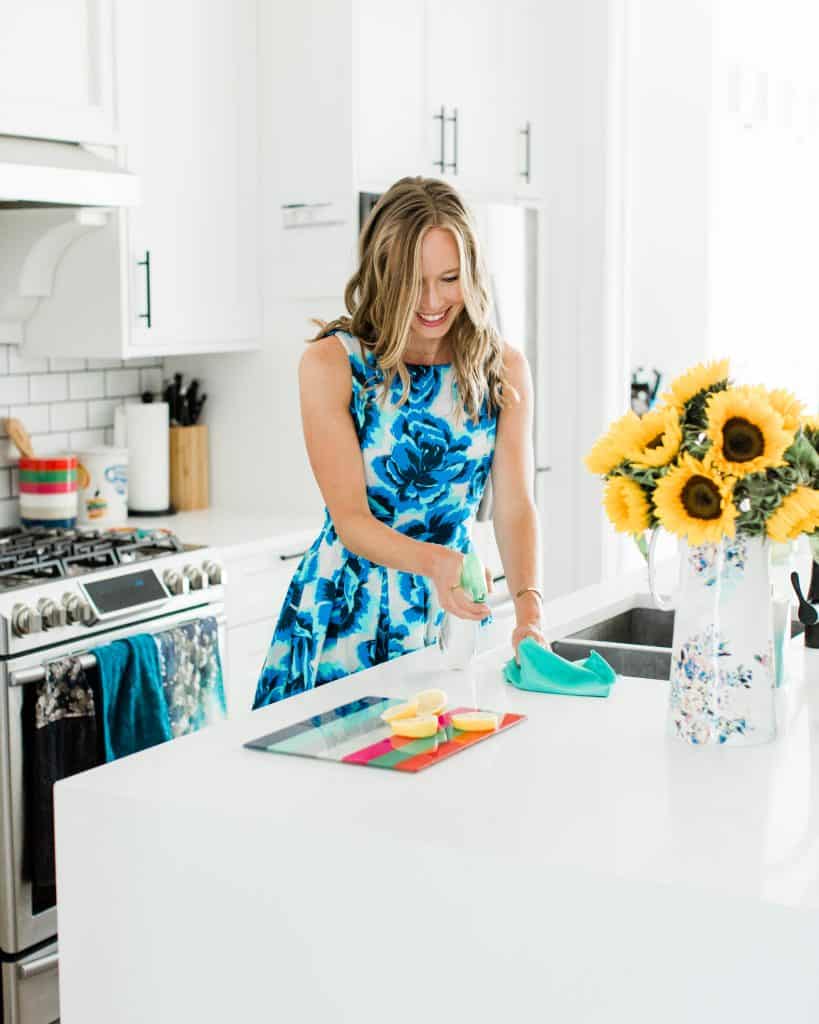
Ingredients to avoid in cleaning products:
Now that you know some of the health risks associated with certain cleaning product ingredients, I want to teach you how to read labels so you know what ingredients to watch for and avoid. It would be impossible for me to list every single ingredient that you need to watch for, but I have tried to list some of the most commonly used ingredients and ingredients that pose the most potential risk.
Here is a list of ingredients to watch for and avoid in cleaning products (adapted from EWG's post: Cleaning Supplies and Your Health which is an incredible resource):
- *2-Bromo-2-Nitropropane-1,3-Diol
- Alkyl Dimethyl Benzyl Ammonium Chloride
- Alkyl Dimethyl Ethylbenzyl Ammonium Chloride
- Didecyldimethylammonium Chloride
- Diethanolamine
- Dioctyl Dimethyl Ammonium Chloride
- Distearyldimonium Chloride
- *DMDM Hydantoin
- Ethanolamine
- Formaldehyde
- Glutaral
- Monoethanolamine Citrate
- Quaternium-15
- Quaternium-24
- Bleach (Sodium Hypochlorite)
- Sulfuric Acid
- Triethanolamine
- Fragrances
- xylol
- glycol
- phenol
- benzene
- toulene
- xylene
- parabens
- phthalates
Other ingredients to avoid in cleaning products:
This one may seem straight forward, but you would be surprised at just how many cleaning products contain ingredients with known hazardous properties that you need to be extra cautious of. If you ever see the following warnings on product labels this is an easy way to tell if a product contains hazardous ingredients:
- If a product warns that it is "flammable"
- If it instructs you to wear a mask or gloves to use the product
- If it requires ventilation to use
- If it requires hazardous waste disposal
Our favorite safe cleaning products:
Are you running to your cupboards to check if the cleaning products you have in your home right now are safe? My intent with this post is not to scare you, but to empower you. Once you know better you can do better. So now that you know what ingredients you need to watch for and avoid, you are probably wondering what cleaning products on the market are safe to use? I want to take the grunt work out of the search for you. Because trust me, not all safe cleaning supplies are created equally.
I tried about six different brands of safe or natural cleaning products before finding a brand that actually works and that I like. There are a lot of products out there that do contain clean ingredients, but they don't actually clean anything. Such a waste of money!
Here is a list of the cleaning products that I use in my home that work really well:
- Aspen Clean Natural All Purpose Cleaner
- Aspen Clean Natural Bathroom Cleaner
- Aspen Clean Natural Glass Cleaner
- Aspen Clean Natural Kitchen Cleaner
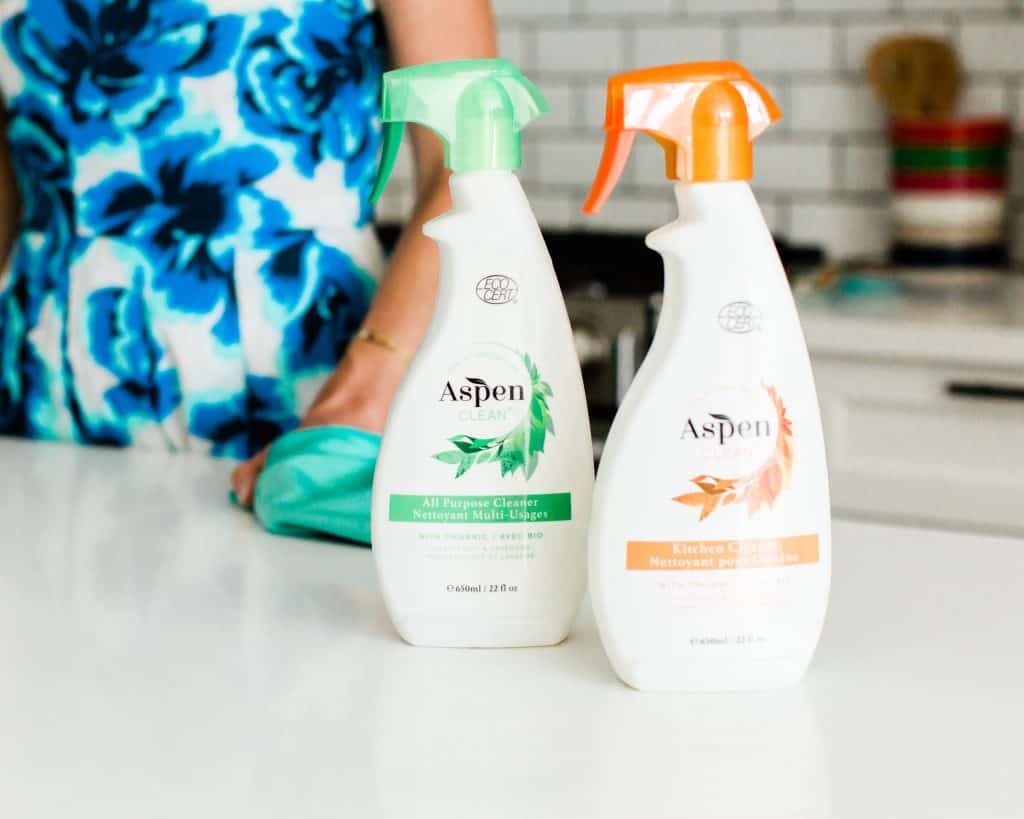
Why I love Aspen Clean products:
- They are made from natural ingredients and scented with organic essential oils so you know that they are safe for your health.
- They work! I can't tell you how many other non-toxic cleaning supplies I tried that just didn't actually do what they said they would. I wasted so much money on other products that honestly didn't work at all. Aspen Clean cleaners have cleaning properties equal to conventional cleaners and have shown a high efficiency in fighting dirt and stains on many types of surfaces.
- They are biodegradable and safe for septic tanks
- They are cruelty free and Leaping Bunny certified
- They are Ecocert certified
- Their products received straight A's on the EWG guide to safe cleaning products (the highest score you can get).
I hope you found this post helpful. If you have any questions or comments please leave them in the comment section.
Other posts you will want to read:
- Is there mercury in your mascara?
- How to choose a safe sunscreen
- Deodorant health risks
- How I healed my keratosis pilaris naturally
Our expertise:
Dr. Erin Carter, MD, FRCPC, is a physician with board certifications in internal medicine and rheumatology. She is passionate about nutrition, environmental health and low toxicity living and has been doing research and publishing information in this area for years. She is also a self-trained chef and has been creating and publishing recipes since 2015. Her recipes have been featured on many different websites and online publications.
Disclaimer: This post was sponsored by Aspen Clean but all of the opinions are my own. I use Aspen Clean products in my home and have never been gifted any products or services from Aspen Clean.

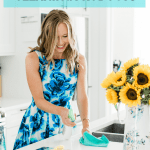

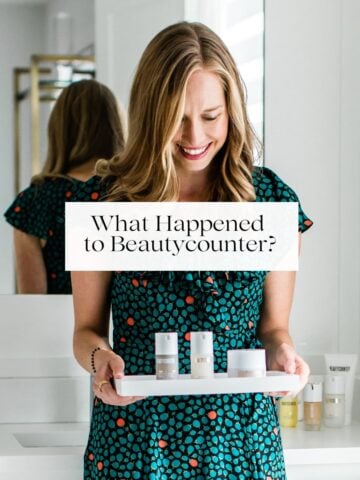

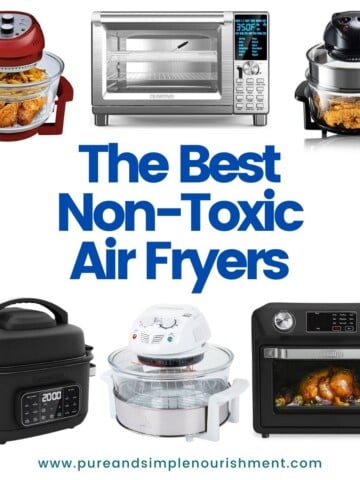
Leave a Reply